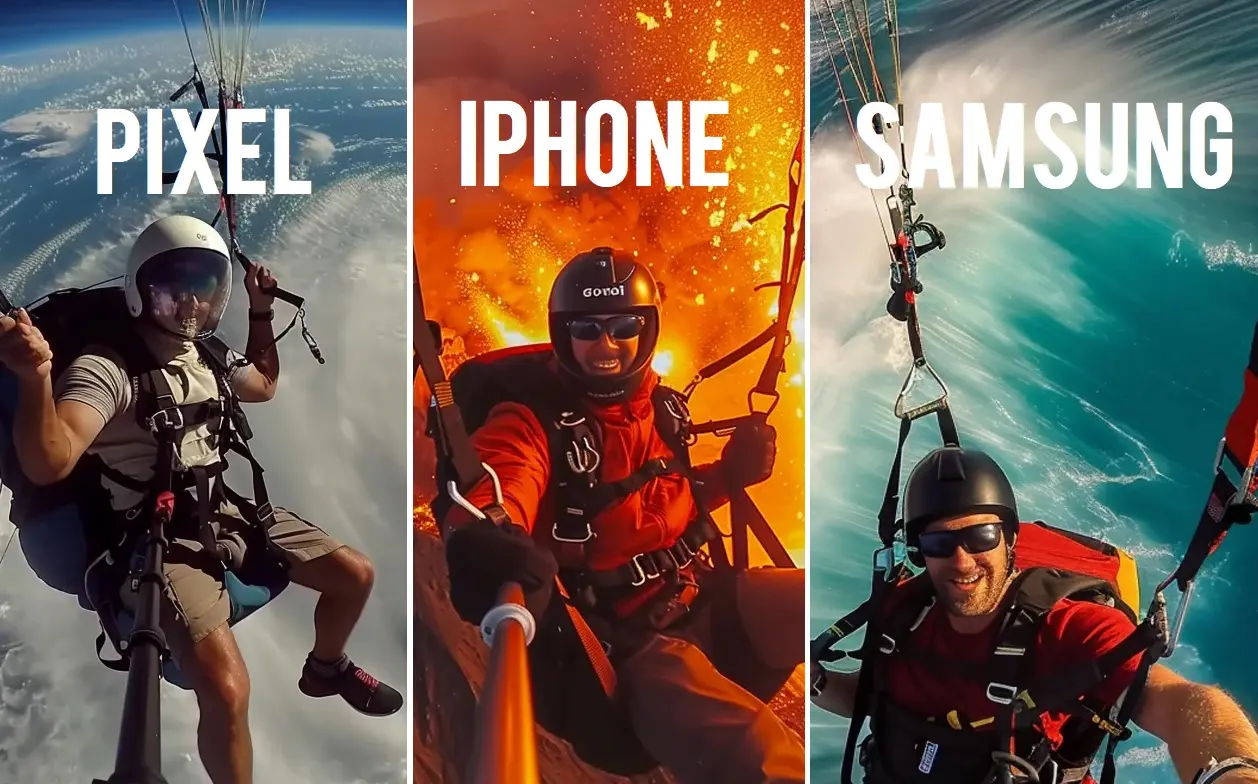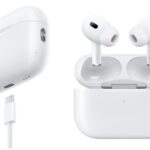Key Takeaways:
- Cameras Compared: iPhone 16 Pro, Pixel 9 Pro, Galaxy S24 Ultra
- Low Light Winner: Pixel 9 Pro’s natural color balance shines.
- Best Zoom: Galaxy S24 Ultra dominates with 100x zoom.
- Most User-Friendly Features: iPhone 16 Pro’s flexibility with portrait modes leads the pack.
If you’re trying to figure out which smartphone has the best camera, you’ve come to the right place. With each new release, manufacturers pack their devices with the latest tech, boasting bigger, better, faster cameras. But which one actually delivers? Today, we’re putting three giants to the test—the iPhone 16 Pro, Pixel 9 Pro, and Samsung Galaxy S24 Ultra—to see which phone camera takes the crown. Whether you’re posting on Instagram, capturing family memories, or simply snapping photos on the go, here’s everything you need to know.
What Are We Comparing?
We’re diving into several aspects: low light performance, zoom capabilities, portrait shots, and overall video stabilization. You’ll get a real sense of how each phone performs, plus tips on which one might suit your needs best.
First Impressions: The Look and Feel of Photos
In a world filled with vibrant colors and high-res images, everyone has a different opinion on what “good” means. Some people prefer natural colors, while others are drawn to punchy, bright images. So, let’s get started with a blind test:
- Samsung Galaxy S24 Ultra tends to produce vibrant, saturated images. If you love your photos to pop with color, this might be your pick. But beware—it sometimes goes overboard, making the images appear less natural.
- iPhone 16 Pro tends to be more muted, with colors that can feel a bit flat. It’s known for its realistic color reproduction, but some users may find the images duller compared to the other two.
- Pixel 9 Pro finds a balance between the two, often delivering a natural but slightly more dynamic image. It doesn’t exaggerate like the Galaxy, but it’s not as restrained as the iPhone either.
Which Camera Do You Think You’d Prefer for Social Media?
If you’re just trying to get that perfect Instagram shot, the Galaxy S24 Ultra might be your go-to. It grabs attention with its vibrant hues and contrasts. But if you’re looking for something a bit more true-to-life or flexible with editing later, the iPhone 16 Pro or Pixel 9 Pro may be the better option.
Zoom Capabilities: Who’s Zooming Who?
Zooming has become a big part of the camera competition, and it’s where the Galaxy S24 Ultra really shows off. It comes with a 100x zoom, which sounds impressive, but in reality, anything beyond 30x can start looking like a blurry watercolor painting. Still, if you want zoom power, Samsung is ahead.
- iPhone 16 Pro caps out at 25x zoom, which might sound like a drawback, but it maintains good image quality at its maximum range. However, it lacks the fine detail you might want in distant shots.
- Pixel 9 Pro sits comfortably in the middle with a 5x optical zoom and goes up to 30x digital zoom. It doesn’t push boundaries as much as Samsung, but it’s reliable if you need that zoom function without sacrificing image clarity.
Verdict on Zoom
If you need zoom, Samsung Galaxy S24 Ultra is the clear winner. For casual users who don’t need extreme zoom, Pixel 9 Pro gives a solid performance without being too flashy, while the iPhone 16 Pro offers less zoom range but keeps its quality intact.
Portrait Mode and Depth Control: Who Nails It?
Portrait modes have become a favorite among users for that professional-looking blur in the background. Each of these phones handles portraits a little differently.
- iPhone 16 Pro stands out here, as it allows you to toggle portrait mode on and off after the shot. If you take a regular photo but later wish you’d used portrait mode, you can simply switch it on in the app—this flexibility is a huge win.
- Pixel 9 Pro does a good job, but it’s limited to 3x zoom for portraits, which can be frustrating if you’re trying to capture a distant subject.
- Samsung Galaxy S24 Ultra also impresses with its 5x portrait zoom, offering beautiful bokeh and detail, but it can sometimes feel a bit artificial when compared to the iPhone’s natural look.
Who Wins for Portraits?
For versatility and ease of use, iPhone 16 Pro wins. You can adjust portrait settings post-shot, giving you more control over the final image. If you prefer vibrant and detailed portraits right out of the gate, though, the Samsung Galaxy S24 Ultra is a solid choice.
Video Quality and Stabilization: Steady As It Goes
For many users, video is just as important as photos, especially with platforms like TikTok and Instagram stories demanding high-quality clips. So, which phone gives you the smoothest, most vibrant videos?
- iPhone 16 Pro consistently delivers top-tier video stabilization. Whether you’re recording in 4K 60fps or just walking while filming, the footage remains smooth and clean.
- Galaxy S24 Ultra comes close, but its telephoto lens can be a bit shaky, especially when zoomed in at high levels. Still, it’s impressive overall.
- Pixel 9 Pro does a solid job, but it tends to struggle with noise in low-light video scenarios. However, if you shoot in regular light, you’ll notice the colors are sharp and the motion is smooth.
The Verdict on Video
For the best video experience overall, iPhone 16 Pro still holds the crown. It offers seamless transitions between lenses and rock-steady footage. Samsung is a close second but falters in stabilization when using the telephoto lens, while the Pixel excels in certain areas but struggles with low light.
Low Light Photography: The Real Test
Low light is where cameras show their true colors—literally. It’s tough to capture detail and maintain natural tones in darker settings, but that’s exactly what we’re testing.
- Pixel 9 Pro leads the way in low light. Its photos are natural, balanced, and crisp without adding too much artificial brightness.
- iPhone 16 Pro tries hard, but its aggressive white balance can lead to over-sharpened or unnatural-looking images.
- Galaxy S24 Ultra also delivers great low-light shots, but it struggles with noise in very dark settings. You might notice grainy textures, especially in the sky or dark backgrounds.
Low Light Winner
For the most natural and well-balanced low-light shots, Pixel 9 Pro is the winner. It keeps things realistic without overcompensating with brightness or noise reduction.
Conclusion: Which Phone Camera Should You Choose?
Ultimately, choosing the best camera phone depends on what you value most. Here’s a quick rundown:
- iPhone 16 Pro: Best for video and flexibility with portrait modes.
- Pixel 9 Pro: Best for low light and natural, balanced photos.
- Samsung Galaxy S24 Ultra: Best for vibrant photos and powerful zoom.
If you’re after the best all-around camera and value the ability to toggle portrait modes, go with the iPhone 16 Pro. However, if you care most about low-light performance and like more natural tones, the Pixel 9 Pro will be your best bet. And for those of you who love vibrant, punchy photos with lots of zoom, the Galaxy S24 Ultra is your go-to.
Whichever one you pick, you’ll be equipped with a powerhouse camera. Happy snapping!
iPhone vs. Pixel vs. Samsung: Which Smartphone is Best for You?
Choosing a smartphone today is tougher than ever, with each brand offering unique features that cater to different needs. The competition between iPhone, Google Pixel, and Samsung Galaxy is particularly fierce, with all three excelling in different areas. If you’re wondering which one is right for you, read on to discover the features that might tip the balance in favor of your next device.
Key Takeaways:
- iPhone excels in video capabilities and has innovative photography modes.
- Google Pixel is best for photography, especially with its AI-driven features.
- Samsung Galaxy offers an abundance of features, including the S Pen, 8K video, and expert raw mode.
iPhone 16 Features: The King of Video
One of the main selling points of the iPhone has always been its video quality. The latest iPhone 16 takes it up a notch, making it a top choice for content creators and social media enthusiasts.
4K 120 FPS and ProRes
If you’re into shooting professional-quality videos, the iPhone 16’s 4K 120 frames per second (FPS) video recording will blow you away. It allows you to capture super-smooth slow-motion footage, perfect for creating visually stunning content. The ProRes and log capabilities ensure cinematic-quality footage, something not easily matched by competitors.
Camera Control and New Photography Modes
The iPhone 16 introduces a new camera control button, allowing you to quickly open the camera with a double tap. While it may seem like a minor feature, it adds convenience for those spontaneous moments.
Even more impressive is Apple’s new photography modes. These aren’t just your average filters; they use semantic understanding to recognize elements like skin tones, shadows, and lighting. This smart technology tailors your images, ensuring they always look their best without the need for heavy post-processing. Imagine adjusting your photos on the fly—without needing an external editing app like Lightroom.
Audio Mix: Perfect for On-the-Go Video Editing
Another gem for creators is the Audio Mix feature. Now, you can enhance audio quality directly from your iPhone. Whether you’re filming a quick vlog or shooting a mini-documentary, this feature ensures voices are clear, even in noisy environments. Plus, with spatial audio capturing more detailed soundscapes, your videos will sound as good as they look.
Google Pixel Features: The Photographer’s Dream
When it comes to photography, the Google Pixel has earned a reputation for being the best. But the new generation adds even more powerful features, making it ideal for anyone who loves snapping photos, whether professionally or just for fun.
Magic Editor and Zoom Enhance
This year’s Pixel introduces the Magic Editor, allowing you to perfect your group photos even after they’ve been taken. Picture this: you take a group shot, but one person is out of place. No problem—the Pixel will reposition everyone into the frame. It’s not perfect, but it’s a game-changer.
For long-range photography, the Zoom Enhance feature sharpens distant shots, improving them by around 10%. This could be the difference between an okay picture and one worth framing. For instance, if you’re at a concert or sporting event, you’ll appreciate the clarity it provides.
8K Video and Astrophotography
Pixel also offers 8K video recording, with a little help from Google’s cloud-powered Video Boost feature. While this process requires cloud uploads and can take some time, the results are impressive, especially in low light. For those who love capturing the stars, the Astrophotography mode continues to be unbeatable, making night photography easier and more beautiful than ever.
Samsung Galaxy Features: The Power User’s Playground
If you’re someone who loves having every possible feature at your fingertips, Samsung Galaxy is likely your best bet. From its S Pen to Director’s View, Samsung Galaxy devices come packed with tools that make it feel like a mini production studio in your pocket.
Multi-Camera Capabilities
Samsung’s unique multi-camera setup gives it the edge in versatility. You have a lens for just about any scenario, from ultra-wide shots to close-ups with 5x zoom. The ability to switch between cameras mid-recording, using Dual Recording and Director’s View, is something that neither the iPhone nor Pixel currently offers.
Expert RAW and AI Image Editing
Samsung also offers Expert RAW, which provides professional-grade controls and allows you to capture photos in the highest quality possible. For those who love to tinker with their images, Galaxy AI can help enhance or even generate fun edits, like adding a cute animal to your selfie. Think of it as your personal photo editor.
S Pen for Precision
For anyone who loves to sketch, annotate, or precisely edit photos and videos, the S Pen is a fantastic addition. It lets you highlight areas to erase, draw attention to specific elements, or even control your phone remotely. It’s perfect for artists, note-takers, and anyone who needs a stylus for detailed work.
Which Phone is Right for You?
The iPhone 16 clearly stands out for video creators, especially those who prioritize audio quality and slow-motion video. If you’re a vlogger, filmmaker, or just someone who loves capturing high-quality videos, the iPhone 16 is the one to beat.
The Google Pixel, on the other hand, is ideal for photography enthusiasts. Whether it’s capturing the night sky or enhancing group photos with AI, it offers the best photography experience. Its Astrophotography mode is especially unrivaled, and its AI-powered features make photo editing a breeze.
Finally, if you want a phone that does everything and then some, the Samsung Galaxy should be your choice. From the S Pen for precision to the 8K video recording and AI-powered image generation, it’s packed with features for power users who want it all.
Conclusion
There’s no one-size-fits-all answer when it comes to choosing between iPhone, Google Pixel, and Samsung Galaxy. Each phone shines in different areas, whether it’s iPhone’s superior video quality, Pixel’s photography features, or Samsung’s feature-packed design.
So, which one is right for you? If video and ease of use are your priorities, go for the iPhone 16. If you’re all about capturing stunning photos with minimal effort, the Google Pixel is your best bet. And if you want a phone with every feature under the sun, then Samsung Galaxy should be in your pocket.
Regardless of which one you choose, you’re getting a top-tier device that excels in its own unique ways.
iPhone 16 Pro: Some Major Problems You Need to Know Before Buying
The iPhone 16 Pro might seem like another impressive release from Apple, but according to online sentiment, it’s falling short in several key areas. People are canceling their pre-orders, and sales are down compared to previous iPhone models. If you’re wondering why this is happening, you’re in the right place. In this article, we’ll dive into the top seven major issues that are impacting the iPhone 16 Pro’s performance in the market.
Key Takeaways
- Lack of standout features is one of the biggest complaints.
- The design looks almost identical to the iPhone 15 Pro.
- AI features are delayed, diminishing excitement.
- Regular iPhone models are catching up in features, reducing the appeal of the Pro.
- No 8K video support on the main camera.
- The new A18 Pro chip isn’t a big upgrade over the standard A18.
- iPhone 17 rumors are causing many to hold off on purchasing.
Lack of Standout Features
When you’re paying a premium price for the iPhone 16 Pro, you’d expect a few jaw-dropping new features, right? Unfortunately, this isn’t the case. Over the years, Apple has consistently introduced major new additions with every iPhone release, like ProMotion displays, MagSafe charging, and the Dynamic Island redesign.
This time, however, the most talked-about feature is the camera control button, which works in portrait and landscape modes. But let’s be honest—most people simply open the camera app and take a photo. So, while the button is technically new, it doesn’t feel like a game-changer.
Real-Life Example
Think back to the iPhone 12 Pro, which introduced LiDAR, a redesign, and MagSafe. That felt revolutionary. In contrast, the iPhone 16 Pro’s updates feel more like fine-tuning than actual innovation.
It Looks Just Like the iPhone 15 Pro
This might be one of the most glaring issues: the iPhone 16 Pro looks almost identical to the iPhone 15 Pro. From the camera bump to the bezels, you’d be hard-pressed to tell them apart. For many, this lack of visual differentiation makes it hard to justify an upgrade, especially when the cost remains high.
If you were to walk around with the iPhone 16 Pro, most people wouldn’t even notice you’ve got the latest model. And let’s face it—part of the appeal of getting a new phone is showing off a fresh, innovative design.
Delayed AI Features (Apple Intelligence)
One of Apple’s biggest selling points for the iPhone 16 Pro was the introduction of Apple Intelligence—their AI-powered features. However, these features are delayed, and users won’t even get access to a beta version until weeks after the phone launches.
Apple usually allows beta testing of new software features long before a release, but not this time. By the time Apple Intelligence becomes available to the public, the initial excitement around the iPhone 16 Pro may have died down.
Opinion: Missed Opportunity
This feels like a massive missed opportunity for Apple. The AI features were supposed to differentiate the iPhone 16 Pro from earlier models. By delaying this launch, Apple has left many customers underwhelmed and frustrated.
Regular iPhone Models Are Closing the Gap
Apple has made significant upgrades to the regular iPhone 16 models, making them more appealing than ever. The iPhone 16 and 16 Plus now feature the same camera control button, action button, and Apple Intelligence as the Pro models. Plus, they’ve added Wi-Fi 7 and an improved cooling system that allows for better sustained performance.
This raises the question: Why pay more for the Pro when the regular models offer nearly all the same features?
Case Study: iPhone 16 Plus Sales Surge
Sales for the iPhone 16 Plus are up 48%, while the Pro models are down. This shows that many consumers are opting for the regular models, likely because they offer better value for the money.
The A18 Pro Chip Isn’t That “Pro”
The new A18 Pro chip was expected to offer a significant performance boost, but in reality, it’s very similar to the standard A18. Both chips share the same CPU core layout and Neural Engine. The only notable difference is the GPU, with the Pro model having six cores instead of five.
There’s no longer a RAM advantage for the Pro models either, as both the iPhone 16 and 16 Pro now have 8 GB of RAM. This lack of differentiation has left many questioning why they should spend extra on the Pro.
iPhone 17 Rumors Are Making People Wait
With rumors swirling about the iPhone 17 bringing a major redesign, many potential buyers are choosing to skip the iPhone 16 Pro and wait for next year’s model. The iPhone 17 is expected to feature a new camera layout, thinner design, and possibly a move away from the Dynamic Island.
The iPhone 17 Ultra is rumored to be the most powerful iPhone ever, with exclusive features like vapor chamber cooling and a more powerful chip. With these kinds of upgrades on the horizon, it’s no surprise that many people are holding off.
Final Thoughts: Should You Buy the iPhone 16 Pro?
If you already have the iPhone 15 Pro, or even the 14 Pro, there’s not enough here to justify an upgrade. The new features, while interesting, aren’t groundbreaking. If you’re someone who loves having the latest and greatest tech, it might be worth waiting for the iPhone 17.
Conclusion
The iPhone 16 Pro isn’t a bad phone by any means, but it’s far from revolutionary. With minimal design changes, delayed AI features, and a lack of standout upgrades, it’s hard to see why you should upgrade from an earlier model. Plus, with rumors of a major iPhone 17 redesign, it might be wise to wait.
For now, the iPhone 16 Pro seems like more of a refinement than a game-changer. So if you’re looking for that “wow” factor, it might be best to hold off and see what Apple has in store for next year.
The iPhone 16 lineup is here with the iPhone 16, 16 Plus, 16 Pro, and 16 Pro Max, bringing incremental updates and a few standout features. Let’s dive into the details, unbox the devices, and explore what Apple has to offer this year.
The iPhone 16/16plus Design
Apple has trimmed down the packaging by 6% compared to last year, though the difference is barely noticeable. The redesigned packaging now features 100% wood-fiber-based materials, an eco-friendly move, though last year’s packaging was already at 99%. Inside, you’ll find the phone, a USB-C cable, a SIM ejector, but no more Apple stickers. The standout color options include a proper blue and pink for the iPhone 16 and 16 Plus, bringing back some vibrant hues after years of muted tones.
Audio Mixing Feature
One unexpected new feature is the audio mixing tool. Whether you’re recording from the front or behind the phone, this tool allows you to adjust audio focus with ease, making it ideal for vloggers or content creators. It’s a cinematic feature where you can prioritize audio from specific subjects—something akin to being a cameraman on a movie set.
Gaming Performance
Powered by a two-generation leap in chip performance, the iPhone 16 and 16 Plus now support console-grade games, a feature previously limited to the Pro models. Running games like Assassin’s Creed on a phone feels like a childhood dream, with smooth 30 frames-per-second gameplay and impressive draw distances. While it still feels like a mobile game in terms of visuals, the sheer scope of the experience is remarkable.
Camera Improvements
The iPhone 16 introduces some new camera features. Spatial video is one of them, though it’s limited to 1080p, and its full potential is unlocked only if you happen to have a Vision Pro headset. Another notable addition is the new camera control—a customizable button that’s flush with the phone’s body, allowing you to zoom or change settings with a swipe. However, the ergonomics leave something to be desired, as the placement can cause hand strain and even induce unwanted camera shake.
Photo Quality
In terms of photo quality, the iPhone 16’s main camera hasn’t changed much from the iPhone 15. However, the new A18 chip does bring improvements to night photography and macro shots. For those upgrading from an older model like the iPhone 12, the jump in quality is significant. The ultrawide camera now has autofocus, improving macro shots by getting much closer to the subject.
Pro Models: iPhone 16 Pro and 16 Pro Max
Moving to the Pro models, the iPhone 16 Pro and Pro Max come in natural and desert titanium finishes. Apple seems to be spacing out its innovation in terms of design, with the new desert titanium color being the only notable change.
On the audio front, the Pro models boast four studio-grade microphones, enhancing the aforementioned audio mixing feature even further. Apple’s Studio audio mode makes your voice sound as if it’s right next to the microphone, offering impressive clarity for creators.
Camera Upgrades on the Pro Models
While the overall image quality is similar between the iPhone 15 Pro and iPhone 16 Pro, the faster sensor on the iPhone 16 Pro allows it to capture high-resolution 48MP photos quicker. This comes in handy when shooting fast-moving subjects or in tricky lighting conditions. Additionally, the iPhone 16 Pro can now record 4K at 120 frames per second, allowing for smoother slow-motion video.
Storage Considerations
One downside to shooting 4K video at higher frame rates is storage consumption. A single minute of 4K video at 120fps takes up nearly a gigabyte, meaning the base model with 128GB storage might fill up fast, especially for content creators.
Final Thoughts
The iPhone 16 lineup doesn’t offer groundbreaking changes but brings some notable refinements in audio, gaming, and camera capabilities. For those upgrading from much older models, the improvements will be significant, but for iPhone 15 users, the jump might not be as compelling. The Pro models cater more to creators and tech enthusiasts with their advanced features, while the base models offer solid performance for everyday users.















